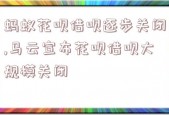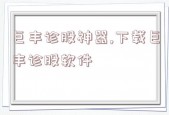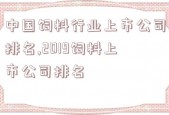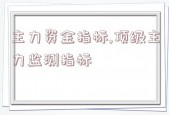实盘参考文献,是什么意思
- 基础知识
- 2022-06-05
- 294
- 更新:2022-05-24 10:10:39
怎样看股票是每个股民心中的疑问,一只股票包含了很多信息,也要从方方面面考虑才能进行正确的判断。一般股民都是看股票的基本面和技术面,广意的有消息面、政策面等。下面给大家讲解《实盘参考文献,是什么意思》,希望对各位有帮助。
本文目录:
问题一:求10个左右 有关储备的参考文献
回答:1.作者:陈燕. 题目:中国适度储备规模的实证分析【J】 2006年
2.作者:庞永刚 刘凤朝 王军,题目:中国储备与进出口贸易的——基于VAR模型的动态分析
关键字:储备 贸易 协整 VAR
问题二:各位有哪些关于储备的参考文献!!
回答:我国的储备与通货膨胀
内容提要:近年来,我国储备规模迅猛增长,截至2006年6月,已高达9411亿美元,超过中国成为全球持有储备最多的国家。那么储备的增加对我国的物价指数的变动是否产生影响以及影响有多大?本文以国际货币主义的通货膨胀传导机制为理论基础,应用协整分析法、格兰杰因果关系分析法,分析物价水平与储备之间的因果关系、长期均衡关系,在实证结果基础上得出结论并分析结果。
关键词:储备;通货膨胀;占款;基础货币;协整分析
改革开放以来,我国对外开放程度不断提高,外贸连续多年出现顺差,储备逐年增加,1996年时只有1 050亿美元,2001年末我国储备突破了2000亿美元大关,至2001年末达2864亿美元,2003年末迅速飙升至4033亿美元,成为仅次于中国的世界第二大储备持有国。2005年底,储备更是创下8188亿美元的新高。截至2006年6月,我国的储备高达9411亿美元,已经超过中国成为全球持有储备最多的国家。储备的增加对增强国家综合国力,增强对外支付能力等方面都有着正面效应。但与此同时,物价指数自2002年开始不断上扬,进入2004年第一季度后,我国务类价格指数均呈现上涨趋势,通胀压力日趋显现,2005年物价指数又出现回落,进入2006年第一季度,物价指数逐渐回暖,继续保持低通胀的走势。那么储备增长对我国物价波动是否有影响,有什么样的影响,如何影响以及受哪些因素制约?本文以1981~2004年数据为统计样本,以国际货币主义的通货膨胀传导机制为理论基础,应用协整分析法、格兰杰因果关系分析法,分析通货膨胀与储备之间的因果关系和长期均衡关系。
一、储备增长对物价影响的理论分析
西方经济学界的国际数量论从实证分析的角度发现,世界通货膨胀与国际储备水平有着密切的关联性,认为20世纪30年代世界强力货币的过度增长在很大程度上是由于国际储备的过度增长,后者导致了世界性的通货膨胀。
孟德尔和约翰逊等人运用货币数量说,对世界性通货膨胀做了全面分析,他们继承了休谟的货币——价格调节机制的思想,强调世界性通货膨胀来源于世界货币总量的过度增长,而国际收支和储备正是物价上涨的传导机制。所以,此说又被统称为“国际货币主义”。按照国际货币主义的思路,一国通货膨胀的传递机制为:一国出现国际收支顺差,将导致该国储备增加并通过货币乘数的作用直接增加货币供应总量,使社会总需求增加。在该国不存在闲置资源的情况下,社会总供给不能相应增加,只能通过物价上涨实现商品市场供求均衡,在资本市场上,货币供给增加将使利率下降。物价上涨将削弱出口商品的竞争力,使经常项目盈余减少或逆差增加,利率下降将使资本流出增加,使资本与金融项目盈余减少或逆差增加,从而使储备增速下降直至减少。储备的减少会产生与上述相反的作用。
储备与经济运行就是在这种负反馈中波动与调整,在动态中实现均衡。这种关系可以表示为:
国际收支顺差→储备↑→基础货币↑→货币供应量↑→物价上升↑、利率下降↓→经常账户和资本与金融账户使储备下降↓→货币供应量↓→物价下降↓、利率上升↑→经常账户和资本与金融账户使储备上升,……,如此循环往复。
这正是本文研究储备与物价指数数量关系的理论依据。货币学派的基本理论是:(其中Ms为货币供给,Md为货币需求)
Ms=Md
货币需求是一阶齐次函数,设Md为货币需求,P为本国的物价水平,Y表示国民收入,i表示利率,货币需求函数可以简写为:
Md=Pxf(Y,i)
设D为国内提供的货币供应基数,即中央银行的国内信贷或支持货币供给的国内资产;R是来自国外的货币供应基数,它通过国际收支盈余获得,以国际储备作为代表:m为货币乘数,指银行体系通过辗转存贷创造货币、使货币供应基数多倍扩大的系数。则货币供给函数可以表达为
Ms=m×(D R)
所以有:P×f/(Y,i)=m×(D R)
则:
P=F(D,R,Y,i)
从以上等式可以看出:物价水平是国内信贷、储备、国民收入以及利率的函数;储备的传导是物价上涨的因素之一。
问题三:汇率方面的英文参考文献 最少来3个 谢谢 !~!!!
回答:Exchange rate
In finance, the exchange rates (also known as the foreign-exchange rate, forex rate or FX rate) between two currencies specifies how much one currency is worth in terms of the other. For example an exchange rate of 102 Japanese yen (JPY, ¥) to the United States dollar (USD, $) means that JPY 102 is worth the same as USD 1. The foreign exchange market is one of the largest markets in the world. By some estimates, about 2 trillion USD worth of currency changes hands every day.
The spot exchange rate refers to the current exchange rate. The forward exchange rate refers to an exchange rate that is quoted and traded today but for delivery and payment on a specific future date.
Quotations
An exchange rate quotation is given by stating the number of units of "term currency" or "price currency" that can be bought in terms of 1 unit currency (also called base currency). For example, in a quotation that says the EURUSD exchange rate is 1.3 (1.3 USD per EUR), the term currency is USD and the base currency is EUR.
There is a market convention that determines which is the base currency and which is the term currency. In most parts of the world, the order is:
EUR - GBP - AUD - USD - *** (where *** is any other currency).
Thus if you are doing a conversion from EUR into AUD, EUR is the base currency, AUD is the term currency and the exchange rate tells you how many Australian dollars you would pay or receive for 1 euro. Cyprus and Malta which were quoted as the base to the USD and *** were recently removed from this list when they joined the euro. In some areas of Europe and in the non-professional market in the UK, EUR and GBP are reversed so that GBP is quoted as the base currency to the euro. In order to determine which is the base currency where both currencies are not listed (i.e. both are ***), market convention is to use the base currency which gives an exchange rate greater than 1.000. This avoids rounding issues and exchange rates being quoted to more than 4 decimal places. There are some exceptions to this rule e.g. the Japanese often quote their currency as the base to other currencies.
Quotes using a country's home currency as the price currency (e.g., EUR 1.00 = $1.45 in the US) are known as direct quotation or price quotation (from that country's perspective) ([1]) and are used by most countries.
Quotes using a country's home currency as the unit currency (e.g., £0.4762 = $1.00 in the US) are known as indirect quotation or quantity quotation and are used in British newspapers and are also common in Australia, New Zealand and the eurozone.
direct quotation: 1 foreign currency unit = x home currency units
indirect quotation: 1 home currency unit = x foreign currency units
Note that, using direct quotation, if the home currency is strengthening (i.e., appreciating, or becoming more valuable) then the exchange rate number decreases. Conversely if the foreign currency is strengthening, the exchange rate number increases and the home currency is depreciating.
When looking at a currency pair such as EURUSD, the first component (EUR in this case) will be called the base currency. The second is called the term currency. For example : EURUSD = 1.33866, means EUR is the base and USD the term, so 1 EUR = 1.33866 USD.
Currency pairs are often incorrectly quoted with a "/" (forward slash). In fact if the slash is inserted, the order of the currencies should be reversed. This gives the exchange rate. e.g. if EUR1 is worth USD1.35, euro is the base currency and dollar is the term currency so the exchange rate is stated EURUSD or USD/EUR. To get the exchange rate divide the USD amount by the euro amount e.g. 1.35/1.00 = 1.35
Market convention from the early 1980s to 2006 was that most currency pairs were quoted to 4 decimal places for spot transactions and up to 6 decimal places for forward outrights or swaps. (The fourth decimal place is usually referred to as a "pip.") An exception to this was exchange rates with a value of less than 1.000 which were usually quoted to 5 or 6 decimal places. Although there is no fixed rule, exchange rates with a value greater than around 20 were usually quoted to 3 decimal places and currencies with a value greater than 80 were quoted to 2 decimal places. Currencies over 5000 were usually quoted with no decimal places (e.g. the former Turkish Lira). e.g. (GBPOMR : 0.765432 - EURUSD : 1.3386 - GBPBEF : 58.234 - EURJPY : 165.29). In other words, quotes are given with 5 digits. Where rates are below 1, quotes frequently include 5 decimal places.
In 2006 Barclays Capital broke with convention by offering spot exchange rates with 5 or 6 decimal places. The contraction of spreads (the difference between the bid and offer rates) arguably necessitated finer pricing and gave the banks the ability to try and win transaction on multibank trading platforms where all banks may otherwise have been quoting the same price. A number of other banks have now followed this.
Free or pegged
Main article: Exchange rate regime
If a currency is free-floating, its exchange rate is allowed to vary against that of other currencies and is determined by the market forces of supply and demand. Exchange rates for such currencies are likely to change almost constantly as quoted on financial markets, mainly by banks, around the world. A movable or adjustable peg system is a system of fixed exchange rates, but with a provision for the devaluation of a currency. For example, between 1994 and 2005, the Chinese yuan renminbi (RMB) was pegged to the United States dollar at RMB 8.2768 to $1. China was not the only country to do this; from the end of World War II until 1966, Western European countries all maintained fixed exchange rates with the US dollar based on the Bretton Woods system. [2]
Nominal and real exchange rates
The nominal exchange rate e is the price in domestic currency of one unit of a foreign currency.
The real exchange rate (RER) is defined as , where P is the domestic price level and P * the foreign price level. P and P * must have the same arbitrary value in some chosen base year. Hence in the base year, RER = e.
The RER is only a theoretical ideal. In practice, there are many foreign currencies and price level values to take into consideration. Correspondingly, the model calculations become increasingly more complex. Furthermore, the model is based on purchasing power parity (PPP), which implies a constant RER. The empirical determination of a constant RER value could never be realised, due to limitations on data collection. PPP would imply that the RER is the rate at which an organization can trade goods and services of one economy (e.g. country) for those of another. For example, if the price of a good increases 10% in the UK, and the Japanese currency simultaneously appreciates 10% against the UK currency, then the price of the good remains constant for someone in Japan. The people in the UK, however, would still have to deal with the 10% increase in domestic prices. It is also worth mentioning that government-enacted tariffs can affect the actual rate of exchange, helping to reduce price pressures. PPP appears to hold only in the long term (3–5 years) when prices eventually correct towards parity.
More recent approaches in modelling the RER employ a set of macroeconomic variables, such as relative productivity and the real interest rate differential.
Bilateral vs effective exchange rate
Bilateral exchange rate involves a currency pair, while effective exchange rate is weighted average of a basket of foreign currencies, and it can be viewed as an overall measure of the country's external competitiveness. A nominal effective exchange rate (NEER) is weighted with trade weights. a real effective exchange rate (REER) adjust NEER by appropriate foreign price level and deflates by the home country price level. Compared to NEER, a GDP weighted effective exchange rate might be more appropriate considering the global investment phenomenon.
Uncovered interest rate parity
See also: Interest rate parity#Uncovered interest rate parity
Uncovered interest rate parity (UIRP) states that an appreciation or depreciation of one currency against another currency might be neutralized by a change in the interest rate differential. If US interest rates exceed Japanese interest rates then the US dollar should depreciate against the Japanese yen by an amount that prevents arbitrage. The future exchange rate is reflected into the forward exchange rate stated today. In our example, the forward exchange rate of the dollar is said to be at a discount because it buys fewer Japanese yen in the forward rate than it does in the spot rate. The yen is said to be at a premium.
UIRP showed no proof of working after 1990s. Contrary to the theory, currencies with high interest rates characteristically appreciated rather than depreciated on the reward of the containment of inflation and a higher-yielding currency.
Balance of payments model
This model holds that a foreign exchange rate must be at its equilibrium level - the rate which produces a stable current account balance. A nation with a trade deficit will experience reduction in its foreign exchange reserves which ultimately lowers (depreciates) the value of its currency. The cheaper currency renders the nation's goods (exports) more affordable in the global market place while making imports more expensive. After an intermediate period, imports are forced down and exports rise, thus stabilizing the trade balance and the currency towards equilibrium.
Like PPP, the balance of payments model focuses largely on tradable goods and services, ignoring the increasing role of global capital flows. In other words, money is not only chasing goods and services, but to a larger extent, financial assets such as stocks and bonds. Their flows go into the capital account item of the balance of payments, thus, balancing the deficit in the current account. The increase in capital flows has given rise to the asset market model.
Asset market model
See also: Capital asset pricing model
The explosion in trading of financial assets (stocks and bonds) has reshaped the way analysts and traders look at currencies. Economic variables such as economic growth, inflation and productivity are no longer the only drivers of currency movements. The proportion of foreign exchange transactions stemming from cross border-trading of financial assets has dwarfed the extent of currency transactions generated from trading in goods and services.
The asset market approach views currencies as asset prices traded in an efficient financial market. Consequently, currencies are increasingly demonstrating a strong correlation with other markets, particularly equities.
Like the stock exchange, money can be made or lost on the foreign exchange market by investors and speculators buying and selling at the right times. Currencies can be traded at spot and foreign exchange options markets. The spot market represents current exchange rates, whereas options are derivatives of exchange rates.
Fluctuations in exchange rates
A market based exchange rate will change whenever the values of either of the two component currencies change. A currency will tend to become more valuable whenever demand for it is greater than the available supply. It will become less valuable whenever demand is less than available supply (this does not mean people no longer want money, it just means they prefer holding their wealth in some other form, possibly another currency).
Increased demand for a currency is due to either an increased transaction demand for money, or an increased speculative demand for money. The transaction demand for money is highly correlated to the country's level of business activity, gross domestic product (GDP), and employment levels. The more people there are unemployed, the less the public as a whole will spend on goods and services. Central banks typically have little difficulty adjusting the available money supply to accommodate changes in the demand for money due to business transactions.
The speculative demand for money is much harder for a central bank to accommodate but they try to do this by adjusting interest rates. An investor may choose to buy a currency if the return (that is the interest rate) is high enough. The higher a country's interest rates, the greater the demand for that currency. It has been argued that currency speculation can undermine real economic growth, in particular since large currency speculators may deliberately create downward pressure on a currency in order to force that central bank to sell their currency to keep it stable (once this happens, the speculator can buy the currency back from the bank at a lower price, close out their position, and thereby take a profit).
In choosing what type of asset to is officially pegged, synthetic markets have emerged that can behave as if the yuan were floating).
汇率
在经济学上,汇率定义为两国货币之间兑换的比例。通常会将某一国的货币设为基准,以此换算金额价值他国几元的货币。在英文使用方面,有时简写为FX,此为外国货币Foreign Exchange的简写。
通俗的说,是一国货币单位兑换他国货币单位的比率,也可以说是用一国货币表示的另一国货币的价格。
汇率的特性在于它多半是浮动的比率。只要货币能够透过汇率自由交换,依交换量的多寡,就会影响隔天的汇率,因此,有人也以赚汇差营利,今日以较低的比率购进某一外币,隔日等到较高的比率出现时,再转手卖出。
所以有时汇率也能看出一个国家的经济状况。了解也能看出这个国家的出口贸易状况。
交叉汇率
所谓交叉汇率是指两种不同货币之间的价格关系,两个国家之间的货币汇兑是利用各自对美元的汇率套算得出。
举例来看,若一美元可分别兑换0.8112欧元、109.28日圆,则欧元兑日圆的交叉汇率为134.71(= 109.28/0.8112)。
问题四:关于的实盘和虚盘。请高手进来看看。
回答:实盘是指真的帐户..虚盘指的是虚拟帐户.
并不是你说的那样.
你所理解的实盘是现在各个银行做的宝 之类的业务..只提供等价货币按牌价交换..
你理解的虚盘是国外操作的交易.目前国内交行正在试点..最高是1:20 并且点差很高..是16个点 国外公司的普遍点差是5个点左右..有的甚至到了1:400....由于属于半违法(只受美国法律保护,不受中国法律保护)状态...如果你能找到家信誉好的代理公司也可以做.
由于把风险和赢利放大了。。。所以国家正在拿交行做试点。。你可以去交行官网上看看“满金宝”
最后打条广告 俺石家庄的 qq 8960270
问题五:什么是实盘交易,实盘是什么
回答:
实盘交易:根据国际清算银行的统计,全球每天的交易量大约在1.9万亿美元。当您预期某种可自由兑换的(或外币)在未来一段时间内,相对于您现在所持有的可自由兑换的(或外币)的汇率会升高时,您可以将自己持有的可自由兑换的(或外币)兑换成您预期将升值的可自由兑换的(或外币),通过这种方式来获得汇率差额的利润。
实盘是银行或经营机构根据实时市场报价作出的及时反映,用数据或图表提供给投资者。
一般在银行开户交易,比如招行或工行,我个人在招行和工行都有账户,实盘的特点是风险和收益都比较小,交易手续费(点差)稍大,一般10~30点。如果操作不错年收益一般5%~10%。资金太小可能收益有限。
开户步骤:到银行柜台申请开一个户,然后购汇存入该账户,和银行签订交易协议,申请开通网上银行,然后在家里用个人电脑登陆该银行的网站,进入网上银行进行交易即可。
问题六:实盘
回答:建议您通过银行渠道办理交易业务。目前,招行有开展实盘买卖业务。“个人实盘买卖”是指客户按照招行发布的汇率进行即期买卖操作。通俗地说,是指个人客户委托招商银行在可兑换币种范围内,将一种外币兑换成另一种外币的操作。
招行“个人实盘买卖”可通过网银、手机银行、柜台等渠道开通,开通实时生效,均不收费。详情请拨打客服热线或登录“在线客服”了解。
以上就是《实盘参考文献,是什么意思》的内容了,看完之后是否对你有帮助呢?欢迎在评论下方留言!
关于《实盘参考文献,是什么意思》的拓展知识
如何选择理财产品
答:现在市面上面的理财产品形形色色,常常让出资者难以挑选,不知道哪个才是最合适自己的。
一般的理财产品有三个目标,依据这三个目标来,就可以很简单,精确的挑选合适自己的理财产品了!
1,收益性:这是目标是指理财产品的收益,现在的理财产品都是年化收益率,当然收益越高的越能被人们承受。

2,风险性:风险性是指理财产品的风险巨细,保本型理财的风险就要小于非保本型理财的风险,当然是风险越低的产品越能保证资金的安全。
3,流动性:流动性是指理财的时刻长短,理财产品的时刻越短,流动性越高。流动性高的产品首要合适于那些在短期对资金有需求的出资者,比方,经商的老板,方案买房买车的出资者,这些都是对资金的流动性要求是比较高的。
所以,咱们在挑选理财产品的时分,就要依据自己的状况,来挑选理财产品。
知识二:
打新股可以用几个账号
答:可以用多个账号申购同一只新股,但是有个身份证名下只能用一个账户打新股,虽然一个投资者可以开多个股票账户,但打新资格和额度是共有的,也就是一个投资者只能参与一次打新,但是可以借用朋友、家人的账户打新股。
关于《实盘参考文献,是什么意思》的相关评论
网友评论一
炒股很难:
无论是哪种投资方式,都是有投资风险的,我喜欢作者的这篇文章,简单明了,新手小白也很容易看明白网友评论二
炒股理财亏钱:
谢谢分享,读了《实盘参考文献,是什么意思》这篇文章,获得了很大的提升网友评论三
小企鹅:
小编是比较好的股票行情网站,这篇文章是关于实盘参考文献,是什么意思的内容,写得非常专业。上一篇:创始人v神的持币,v神首富
- 294人参与,4条评论
 阿呆 2022-05-24 13:47:07 回复
阿呆 2022-05-24 13:47:07 回复- rage. The future exchange rate is reflected into the forward exchange rate stated today. In our example, the forward exchange rate of the dollar is s
 库里 2022-05-24 21:37:59 回复
库里 2022-05-24 21:37:59 回复- uable) then the exchange rate number decreases. Conversely if the foreign currency is strengthening, the exchange rate number increases and the
 小奥 2022-05-24 15:25:55 回复
小奥 2022-05-24 15:25:55 回复- he increasing role of global capital flows. In other words, money is not only chasing goods and services, but to a larger extent, f
 科比 2022-05-24 14:46:54 回复
科比 2022-05-24 14:46:54 回复- either an increased transaction demand for money, or an increased speculative demand for mon






























有话要说...